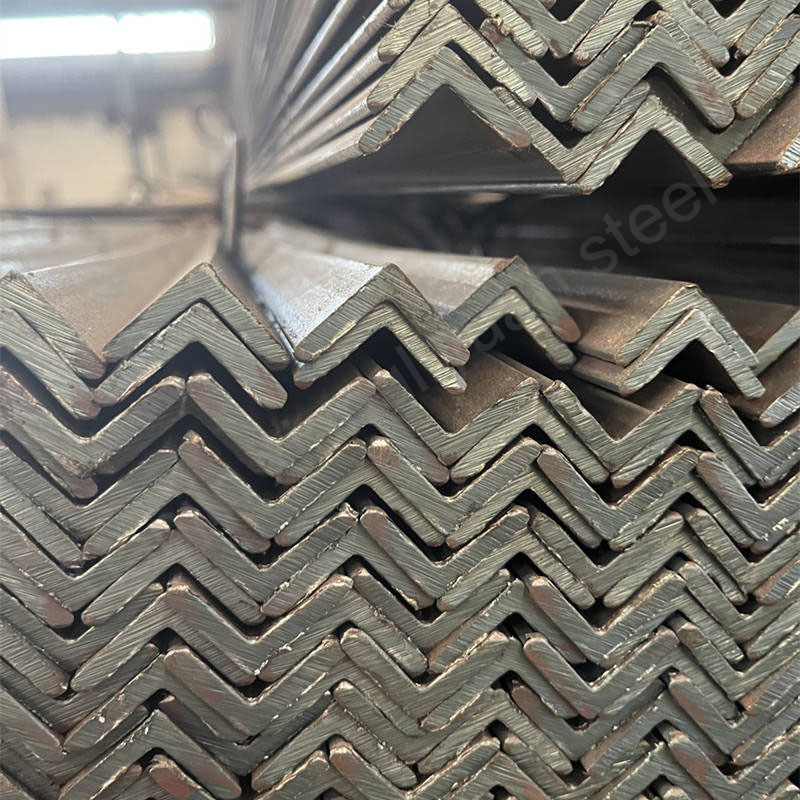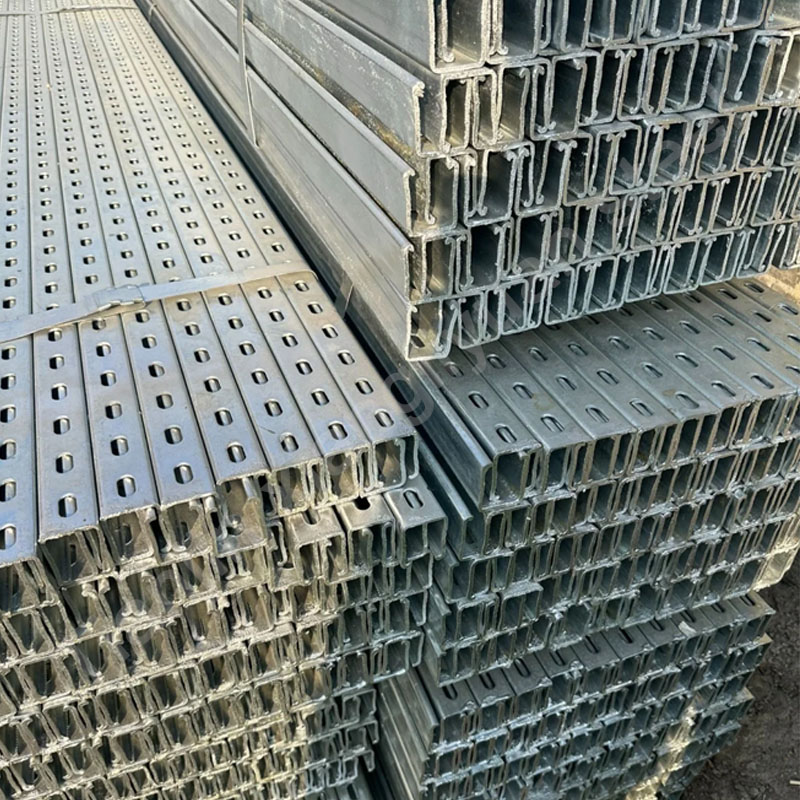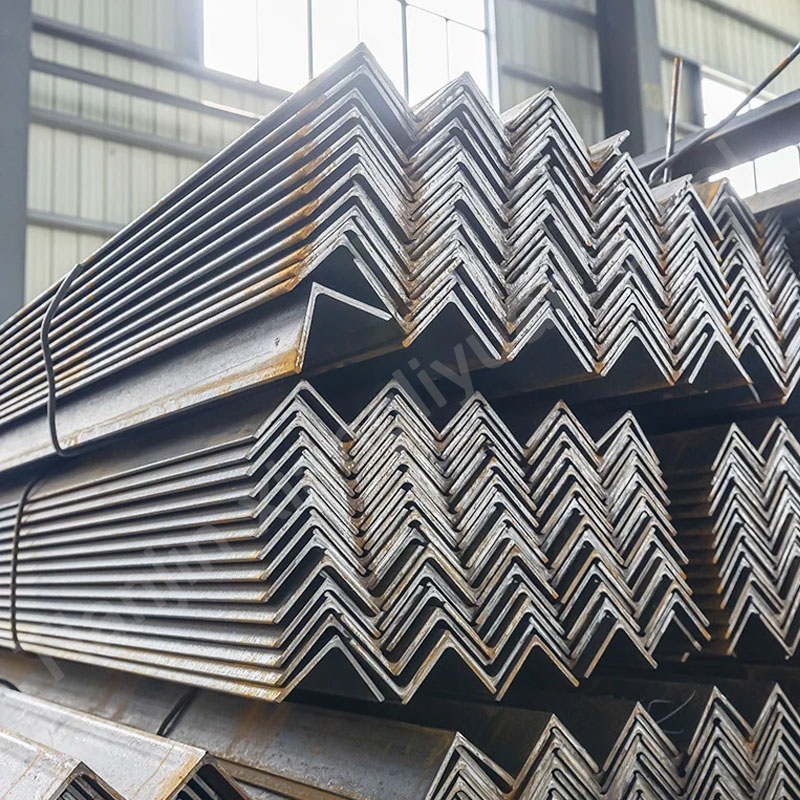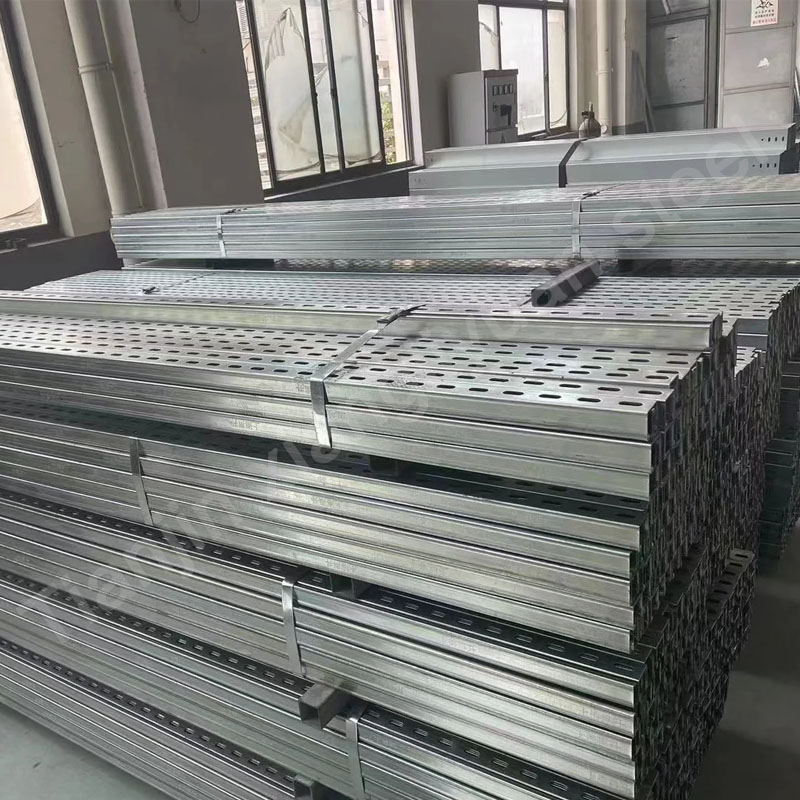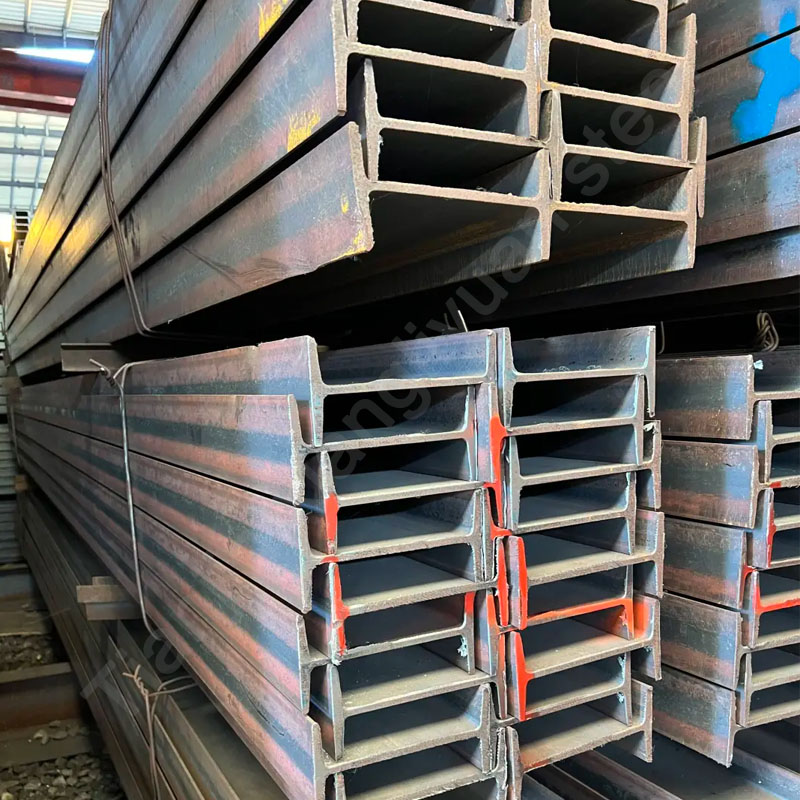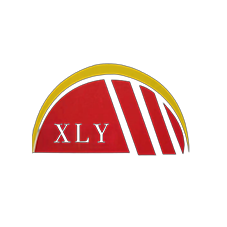Angle steel, also known as angle iron, is a long steel strip with two sides perpendicular to each other at a 90-degree angle. It is widely used in various building structures and projects. The cross-sectional shape of angle steel is L-shaped, and there are two forms of equal-leg angle steel and unequal-leg angle steel.
The materials of angle steel mainly include the following categories:
Carbon structural steel: This is the most common angle steel material with good comprehensive performance and is suitable for general engineering and building structures.
Q235: This is a common carbon structural steel with a yield strength of 235 MPa and good plasticity and weldability.
Q345: This is a low-alloy high-strength steel with a yield strength of 345 MPa, suitable for structures requiring higher strength.
Low-alloy high-strength steel: This steel improves the strength and toughness of the steel by adding alloying elements such as manganese, vanadium, titanium, etc., while maintaining good welding performance.
Q355: Higher strength than Q345, with a yield strength of 355 MPa, suitable for heavy structures and projects.
Stainless steel: Used in environments requiring high corrosion resistance, such as chemical plants, marine engineering, etc.
304 stainless steel: has excellent corrosion resistance and processing performance.
316 stainless steel: compared with 304, molybdenum is added to further improve corrosion resistance, especially in marine and chemical environments.
Hot-dip galvanized steel: this angle steel is plated with a layer of zinc on the surface, and the corrosion resistance of the steel is improved by hot-dip galvanizing process. It is suitable for outdoor and humid environments.
Hot-dip galvanized Q235: Q235 steel is usually used for galvanizing.
Weathering steel: this steel improves atmospheric corrosion resistance by adding alloy elements such as phosphorus, copper, chromium, and nickel to its composition.
Q355GNH: is a common weathering steel suitable for structures such as bridges, vehicles, and towers that are exposed to the atmosphere for a long time.
Special steel: according to specific uses and requirements, some special steels may be used, such as high-temperature resistant steel, low-temperature resistant steel, etc.
Other materials: in some special applications, angle steels made of non-ferrous materials such as aluminum alloys and copper alloys may also be used to meet specific usage requirements.
Angle steel can be divided into many types according to different standards and uses. The main classifications are as follows:
1. According to the difference in side length and side thickness
Equal Angle Steel:
The lengths of the two sides are equal. For example: 50x50mm, 100x100mm, etc.
Unequal Angle Steel:
The lengths of the two sides are unequal. For example: 50x30mm, 100x60mm, etc.
2. According to the production process
Hot Rolled Angle Steel: It is formed by rolling the steel billet at high temperature. It is common and widely used.
Cold Formed Angle Steel: It is formed by mechanical bending at room temperature and is mainly used in some special occasions.
3. According to surface treatment
Black Angle Steel: The surface has not been galvanized or other anti-corrosion treatment.
Galvanized Angle Steel: The surface has been galvanized and has good anti-corrosion properties. It is suitable for outdoor and humid environments.
4. According to the purpose
Architectural angle steel: used for building structures, house frames, bridges, etc.
Industrial angle steel: used for mechanical equipment, brackets, transmission devices, etc.
Power tower angle steel: used for the support structure of power transmission towers.
Transportation angle steel: used for structural components of trucks, ships, etc.
Storage shelf angle steel: used to manufacture warehouse shelves.
The standards for angle steel vary from country to country. The main standards include the following:
Chinese Standard (GB/T)
GB/T 706-2016 “Hot-rolled Steel Sections”
GB/T 9787-2012 “Dimensions, Shapes, Weights and Permissible Deviations of Hot-rolled Equal Angle Steel”
GB/T 9788-2012 “Dimensions, Shapes, Weights and Permissible Deviations of Hot-rolled Unequal Angle Steel”
American Standard (ASTM)
ASTM A36 / A36M
ASTM A572 / A572M
ASTM A588 / A588M
European Standard (EN)
EN 10056-1:1998
EN 10025-2:2004
Japanese Standard (JIS)
JIS G3101
JIS G3192
International Standard (ISO)
ISO 657-1:1989
ISO 657-2:1989
Other National Standards
British Standard (BS EN)
BS EN 10056-1:1999 “Structural Steel Angle”
German Standard (DIN)
DIN 1028:1994 “Hot-rolled Equal Angle”
DIN 1029:1994 “Hot-rolled Unequal Angle”
Angle steel is widely used in various fields due to its shape and strength characteristics. The following are the main uses of angle steel:
Building structure
House structure: used for the frame structure of the building, such as beams, columns, trusses, etc.
Bridge structure: as a support and reinforcement member of the bridge.
Tower structure: used for high-rise structures such as power transmission towers and communication towers.
Industrial application
Machinery and equipment: used to manufacture brackets and frames of mechanical equipment.
Conveyor: used for support structures of conveyor belts and other industrial conveying systems.
Heavy equipment: as the base structure and reinforcement of heavy equipment and machinery.
Transportation
Automobile: used for structural components of trucks, trailers and other means of transportation.
Ship: used for hull frames and other structural components.
Railway: as part of railway vehicles and infrastructure.
Power Engineering
Power tower: Support structure for high-voltage transmission towers and communication towers.
Substation structure: Frame structure for substations and distribution stations.
Infrastructure
Storage racks: Used to manufacture warehouse racks and logistics storage systems.
Guardrails and fences: Guardrails and fence structures for roads, bridges and construction sites.
Protective grids: Protective grids for construction sites and stadiums.
Agriculture and Civil
Greenhouses: Frame structures for agricultural greenhouses.
Shelves and supports: Used for various civil shelves, billboards and support structures.
Other uses
Decoration and decoration: Used for indoor and outdoor decorative structures and frames.
Crafts production: Used to make various metal crafts and decorative pieces.
Experimental and research facilities: Frame structures for laboratories and scientific research facilities.
Angle steel is widely used in various fields such as construction, industry, transportation, power, infrastructure, agriculture and civil due to its good mechanical properties and easy processing. Its diverse uses and wide application make it an indispensable and important material in modern engineering and construction.

